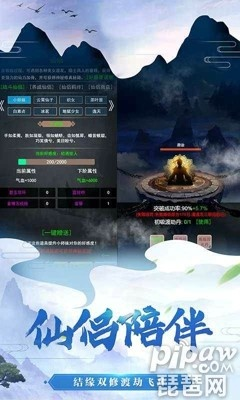<!DOCTYPE html>
Exploring the World of Real-Time Dynamic GraphicsIntroduction to Dynamic Graphics
Dynamic graphics, often referred to as real-time graphics or live animations, have become an integral part of our daily lives. These graphics are designed to change, animate, or update in real-time, providing an engaging and interactive experience for users. From the vibrant animations on our smartphones to the immersive virtual reality experiences, dynamic graphics have revolutionized the way we interact with technology.
The Evolution of Dynamic Graphics
The journey of dynamic graphics can be traced back to the early days of computer graphics. Initially, these graphics were limited to simple animations and static visual effects. However, with advancements in technology, especially in computer processing power and graphics rendering, dynamic graphics have evolved to become highly sophisticated and complex.
Applications of Real-Time Dynamic Graphics
Real-time dynamic graphics find applications in various domains, including entertainment, education, gaming, and even business. Here are some notable examples:
Entertainment: Dynamic graphics are extensively used in the entertainment industry to create visually stunning movies, animations, and video games. The latest advancements in graphics technology have allowed for the creation of lifelike characters and environments, enhancing the overall entertainment experience.
Education: Dynamic graphics play a crucial role in educational content, helping students visualize complex concepts and understand difficult topics more easily. Interactive simulations and visualizations make learning interactive and engaging.
Gaming: Video games have seen a dramatic transformation due to the integration of dynamic graphics. Realistic character animations, detailed environments, and fluid physics have significantly improved the gaming experience, making it more immersive and realistic.
Business: In the business world, dynamic graphics are used for presentations, data visualization, and product demonstrations. These graphics help convey information more effectively, making it easier for audiences to understand complex data and concepts.
Technological Foundations
Creating dynamic graphics requires a robust technological foundation. Here are some key components that enable the development of real-time dynamic graphics:
Graphics Processing Units (GPUs): GPUs are specialized hardware designed to accelerate the creation and rendering of graphics. They play a vital role in real-time dynamic graphics, enabling the processing of complex graphical computations.
Shaders: Shaders are small programs that run on the GPU and control the rendering of graphics. They are essential for creating realistic lighting, shadows, and textures, which are key elements of dynamic graphics.
Graphics APIs: Application Programming Interfaces (APIs) like OpenGL and DirectX provide a set of functions and tools for developers to create dynamic graphics. These APIs abstract the complexity of graphics hardware, making it easier to develop and optimize graphical applications.
Challenges and Innovations
Despite the advancements in technology, there are still challenges in the realm of dynamic graphics. Some of these challenges include:
Performance: Ensuring that dynamic graphics run smoothly and efficiently, especially on lower-end hardware, remains a challenge. Optimization techniques and efficient algorithms are essential for achieving high performance.
Realism: Achieving a high level of realism in dynamic graphics, especially for complex scenes with numerous objects and characters, requires significant computational resources. Developers continuously seek innovative ways to balance realism and performance.
User Experience: Creating dynamic graphics that are engaging and intuitive for users is a complex task. Designers and developers need to consider user interaction, visual storytelling, and accessibility to provide a positive user experience.
Future Prospects
The future of dynamic graphics looks promising, with ongoing innovations and advancements. Some of the potential developments include:
Augmented Reality (AR) and Virtual Reality (VR): AR and VR technologies are expected to become more immersive with the integration of dynamic graphics. This will open up new possibilities for interactive experiences and applications.
转载请注明来自北京朝宇律师事务所,本文标题:《突发动态图,突然的恐怖动态图 》












 京ICP备2022030879号-1
京ICP备2022030879号-1
还没有评论,来说两句吧...